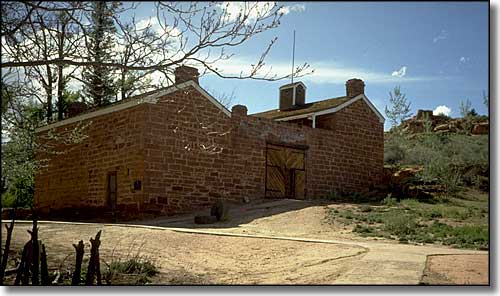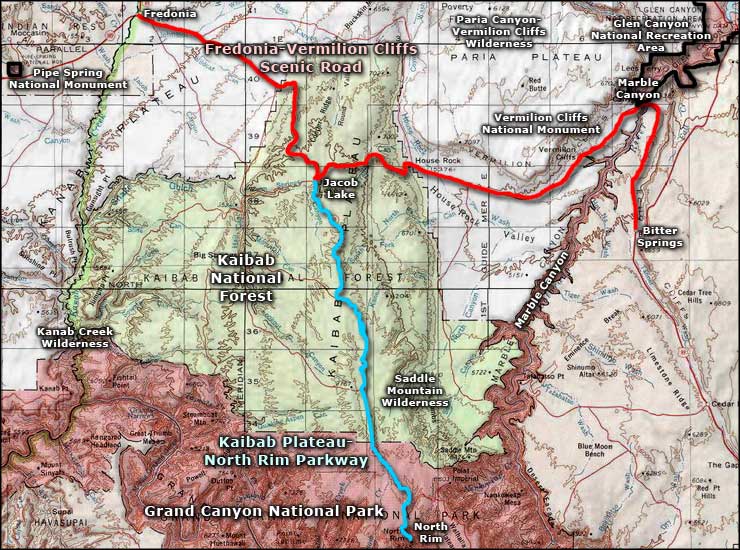
Pipe Spring National Monument

Winsor Castle
Your first stop when visiting Pipe Spring will be at the Pipe Spring National Monument - Kaibab Band of Paiute Indians Visitor Center and Museum. The Visitor Center and Museum is a joint project of the National Park Service and the Kaibab Paiute. The Museum is where you'll learn about the people and cultures who have inhabited this region for thousands of years. There are also detailed exhibits about the more recent Native American cultures and about the early European pioneers who settled here. You can also find information here about the Grand Canyon and about Grand Canyon-Parashant National Monument.
This whole site is centered around a reliable water source that has existed here for centuries. There is evidence of Native Americans going back 10,000 years, while the Europeans didn't arrive until the 1860's when a group of Mormons built a tithing cattle ranch on the site. Several stone buildings from the old ranch survive, including a fortified ranch house named Winsor Castle (the first superintendent of the ranch was Anson P. Winsor). The ranch site is surrounded by the National Monument, which is surrounded by the reservation of the Kaibab Band of Paiute Indians.
A tour of Winsor Castle might take you half-an-hour (tours start off every 30 minutes during normal business hours). A hike on the Ridge Trail to see some of the other sights in the area (overlooking the Arizona Strip - that section of Arizona north of the Grand Canyon) should take another half-hour. The East and West Cabins have exhibits portraying local cowboy life and local efforts at historic preservation. The Museum though, that might take you an hour or more, depending on how much you get into it. The Museum has 12 exhibits about the history of the Kaibab Band and their interactions with other cultures and tribes, the arrival of Mormon settlers in the region and the evolution of modern Paiute culture and tradition.
Pipe Spring was discovered and named in 1858 by an LDS missionary expedition led by Jacob Hamblin. In the 1860's a group of Mormons from St. George, Utah brought cattle into the area and tried to start a large cattle operation. That started a conflict with the local Paiute and Navajo that flared into violence a couple times. By 1872, a protective fort had been built over the main spring in order to control who got access to the water. In 1873 the ranch and fort were purchased by Brigham Young in the name of the LDS Church and Anson P. Winsor, LDS Bishop of Grafton, Utah, was hired to operate the place and maintain the fort. For many years this was a way station for people traveling across the Arizona Strip. In the 1870's and 1880's it served as a refuge for polygamist wives. In 1887, the Edmunds-Tucker Act was passed by Congress and in the aftermath of that, the church lost control of the property through penalties invoked by the act (the Edmunds-Tucker Act dissolved the Corporation of the LDS Church and directed the federal government to confiscate all church-owned properties valued at $50,000 or more). Principals in the church sued and in 1890, the US Supreme Court upheld the seizure of church assets under the Edmunds-Tucker Act. The Act was finally repealed in 1978, far too late for the church to have held onto the Pipe Spring Ranch. Private individuals bought the ranch and ran cattle on it until the federal government bought the property in 1923 and set it aside as a national monument.

Pipe Spring National Monument area map
